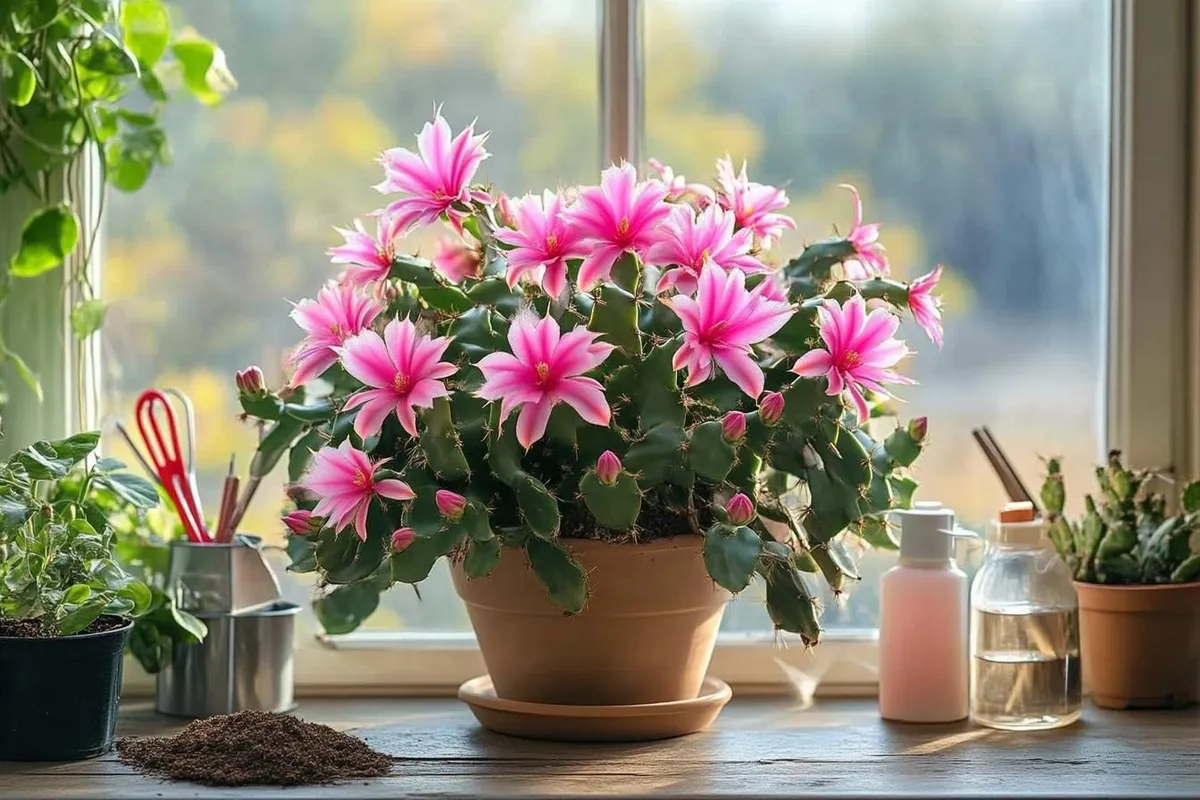What the Christmas cactus needs
The Christmas cactus does best when its care mimics its natural home. It loves well-draining, slightly acidic soil (this helps avoid root rot and keeps it growing strong). Since overwatering can spell trouble, letting extra water flow away is key.
Lighting is another big deal. The plant needs plenty of light, but you’ll want to keep it out of direct sun to prevent leaf burn. A spot by a window with filtered light or a sunny room works great. Aim to keep the temperature between 59 and 77°F for a comfy environment that really helps it thrive.
This cactus also prefers a bit of humidity. Using a humidity tray or giving it an occasional mist works wonders, especially in dry indoor winter settings.
How to get spectacular blooms
Nailing those brilliant blooms starts with tweaking your watering habits. Around October, cut back on watering to get the plant ready for its flowering phase. This drier period mimics the fall and tells the plant it’s time to rest.
For about six to eight weeks, move your cactus to a cool, dark spot (imitating the shorter days and cooler nights of fall). When the break is over, slowly ease it back into brighter light and resume regular watering. This gentle transition encourages bud formation and eventually leads to those breathtaking blooms.
Propagating your Schlumbergera
If you’re looking to share the beauty of your Christmas cactus or expand your collection, propagation is the way to go. Start by snipping off a branch that has at least two or three segments from a healthy plant. Let the cut end dry out a bit before planting it in a mix of potting soil and sand.
Keep the soil evenly moist (but not soggy) as your new cutting gets established. With a little patience and care, new shoots will pop up, leading to a thriving plant ready for its future floral show.
Keeping your cactus happy
Regular upkeep is key to keeping your Christmas cactus looking its best all year long. Watch your watering so the roots don’t get waterlogged, and feed it once a month with a fertilizer made for flowering plants to support growth and bloom production.
Repot your cactus every two to three years to refresh the soil and give the roots more room to spread. And after each bloom cycle, a light trim helps keep it looking neat while encouraging fresh new growth.
Why we love Schlumbergera
Schlumbergera isn’t just about a beautiful winter display—it’s also a great houseplant because it adapts well to indoor living. Its ability to flower during the darker parts of the year makes it a favorite for anyone looking to brighten up their indoor space when outdoor gardens are on pause.
If you’re charmed by this delightful plant, paying attention to its specific needs and sticking with a solid care routine will help you enjoy its full potential. Not only will you be adding a pop of color to your home, but you’ll also be nurturing a little piece of natural art every holiday season.
